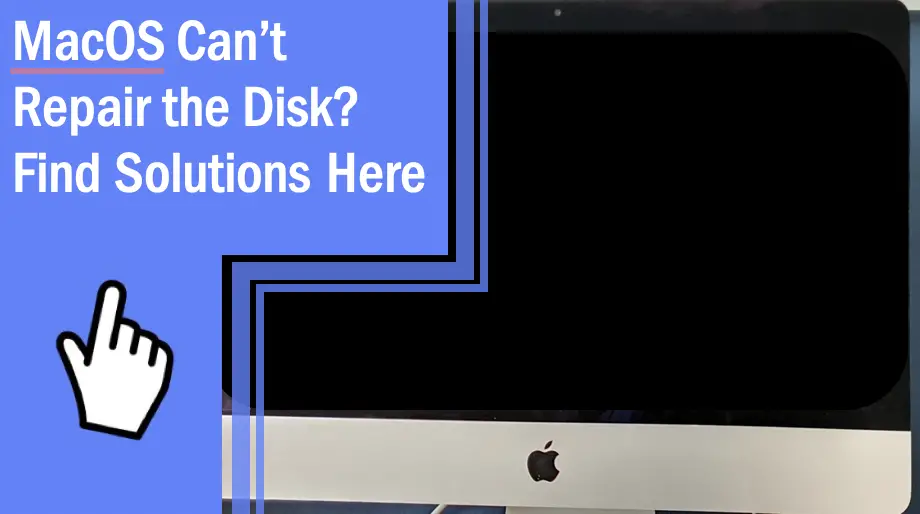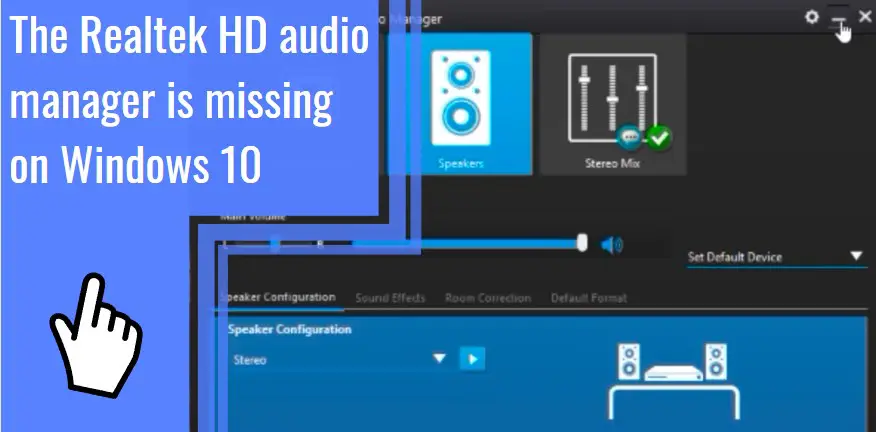What you find on this page:
Is your MacOS saying it can’t repair the disk? This problem is common, and you can find all the possible solutions here.
While the problems may differ slightly, the same set of solutions applies to all these occurrences, no matter the type of external hard disk or drive.
MacOS Can’t Repair the Disk: How to Reformat
Not all external hard drives deliver files and data in the same format, so you may need to reformat the disk to suit your computer’s settings (MacOS). Luckily, reformatting an external disk isn’t too hard; follow the simple steps below!
- Back up all your data.
- Go to the applications window on your Mac and click on Utilities.
- Under Utilities, open the Disk Utility system.
- All external sources will appear under Disk Utility. Select the disk you wish to reformat.
- Erase all data from the external disk. The disk will automatically reformat.
- Try running the disk again.
- If the disk runs and repairs successfully on your Mac, you should now be able to restore your backed-up files and use the external disk as you normally would.
MacOS Can’t Repair the Disk: External Hard Drive
It’s not uncommon for MacOS to struggle to repair an external disk like an external hard drive. These issues can occur with any hard drive, so any of the hard drives discussed below could result in Disk Utility failure if not properly formatted.
Solutions
- Do a backup before it gets worse.
- Run FirstAid again.
- Reformat the disk.
- Perform an automatic repair.
- Run a system restore.
- Use the FSCK command under single-user mode.
- Perform maintenance on your Mac.
- Replace hard disks.
MacOS Can’t Repair the Disk: Seagate
As one of the most common external disk brands, Seagate users often run into disk repair error messages.
Solutions
- Do a backup before it gets worse.
- Run FirstAid again.
- Reformat the disk.
- Perform an automatic repair.
- Run a system restore.
- Use the FSCK command under single-user mode.
- Perform maintenance on your Mac.
- Replace hard disks.
MacOS Can’t Repair the Disk: My Passport
My Passport external disks are a quality product, so they rarely cause error messages. But if the disk has corrupted files, Disk Utility may struggle.
Solutions
- Do a backup before it gets worse.
- Run FirstAid again.
- Reformat the disk.
- Perform an automatic repair.
- Run a system restore.
- Use the FSCK command under single-user mode.
- Perform maintenance on your Mac.
- Replace hard disks.
iPod Classic Won’t Sync: MacOS Can’t Repair the Disk
A common dilemma with disk repairing is when someone tries to sync a classic iPod to their Mac.
Syncing an iPod, no matter how old, should not be a problem as long as all your devices have the most recent Apple software. If you can’t repair the disk, it could be a problem with your Mac’s hard disk or an issue with your iPod’s hard disk.
Solutions
- Do a backup before it gets worse.
- Run FirstAid again.
- Reformat the disk.
- Perform an automatic repair.
- Run a system restore.
- Use the FSCK command under single-user mode.
- Perform maintenance on your Mac.
- Replace hard disks.
MacOS Can’t Repair the Disk: GDrive
GDrive (Google Drive) should never cause Disk Utility error messages, but if it does, you should delete the application and reinstall it.
Solutions
- Do a backup before it gets worse.
- Run FirstAid again.
- Reformat the disk.
- Perform an automatic repair.
- Run a system restore.
- Use the FSCK command under single-user mode.
- Perform maintenance on your Mac.
- Replace hard disks.
MacOS Can’t Repair the Disk: Sierra
If you’re still using Sierra OS, you will encounter Disk Utility error messages. To fix this, update your software!
Solutions
- Do a backup before it gets worse.
- Run FirstAid again.
- Reformat the disk.
- Perform an automatic repair.
- Run a system restore.
- Use the FSCK command under single-user mode.
- Perform maintenance on your Mac.
- Replace hard disks.
MacOS Can’t Repair the Disk: Lacie
Lacie premium hard drives can cause issues if not in the correct format but are typically easy to use with Macs.
Solutions
- Do a backup before it gets worse.
- Run FirstAid again.
- Reformat the disk.
- Perform an automatic repair.
- Run a system restore.
- Use the FSCK command under single-user mode.
- Perform maintenance on your Mac.
- Replace hard disks.
MacOS Can’t Repair the Disk (You Can Still Open or Copy Files)
If the Mac won’t repair the disk, but you can still open and copy files, the repair was interrupted. If this happens to you, take immediate action following the solutions and advice below.
Solutions
- Do a backup before it gets worse.
- Run FirstAid again.
- Reformat the disk.
- Perform an automatic repair.
- Run a system restore.
- Use the FSCK command under single-user mode.
- Perform maintenance on your Mac.
- Replace hard disks.
MacOS Can’t Repair the Disk: Time Machine
Time Machine is the built-in backup feature in MacBooks. You will use this feature to back up data when you receive error messages from Disk Utility.
Solutions
- Do a backup before it gets worse.
- Run FirstAid again.
- Reformat the disk.
- Perform an automatic repair.
- Run a system restore.
- Use the FSCK command under single-user mode.
- Perform maintenance on your Mac.
- Replace hard disks.
MacOS Can’t Repair the Disk (You Can Still Open and Copy Files and Read on Windows 10)
Unfortunately, Windows 10 on Mac tends to cause many disk repairing problems, so most Windows 10 users have experienced this issue. There are three possible fixes to this problem.
Solutions
- Do a backup before it gets worse.
- Run FirstAid again.
- Reformat the disk.
- Perform an automatic repair.
- Run a system restore.
- Use the FSCK command under single-user mode.
- Perform maintenance on your Mac.
- Replace hard disks.
MacOS Can’t Repair the Disk: NTFS
NTFS stands for New Technology File System, which is a proprietary journaling file system from Microsoft. An out-of-date NFTS can cause repair errors.
Solutions
- Do a backup before it gets worse.
- Run FirstAid again.
- Reformat the disk.
- Perform an automatic repair.
- Run a system restore.
- Use the FSCK command under single-user mode.
- Perform maintenance on your Mac.
- Replace hard disks.
MacOS Can’t Repair the Disk: Drobo
Drobo external hard drives can be complex and use foreign formatting, so it’s best to reformat them before trying to use them with a Mac.
Solutions
- Do a backup before it gets worse.
- Run FirstAid again.
- Reformat the disk.
- Perform an automatic repair.
- Run a system restore.
- Use the FSCK command under single-user mode.
- Perform maintenance on your Mac.
- Replace hard disks.
What Does MacOS Can’t Repair the Disk “LAPBU” Mean?
An error message with “LAPBU” is extremely rare, but it likely refers to the hardware in your computer malfunctioning. If your computer says anything about “LAPBU”, you probably need a new hard disk.
MacOS Can’t Repair the Disk: Kindle
Kindles are simply external disks, so you’re less likely to experience repair problems. But if you do, a quick disk reformat will solve the dilemma.
Solutions
- Do a backup before it gets worse.
- Run FirstAid again.
- Reformat the disk.
- Perform an automatic repair.
- Run a system restore.
- Use the FSCK command under single-user mode.
- Perform maintenance on your Mac.
- Replace hard disks.
MacOS Can’t Repair the Disk: USB
If you have issues with your USB, it’s likely due to corrupted files on the disk. Reformatting the disk and backing up your data elsewhere can help with USB repair error messages.
Solutions
- Do a backup before it gets worse.
- Run FirstAid again.
- Reformat the disk.
- Perform an automatic repair.
- Run a system restore.
- Use the FSCK command under single-user mode.
- Perform maintenance on your Mac.
- Replace hard disks.
MacOS Can’t Repair the Disk: Kingston USB
Kingston USBs typically work well with MacOS, so it’s unusual to receive error messages. But if the files on the Kingston USB are corrupt, your computer won’t be able to repair the disk.
Solutions
- Do a backup before it gets worse.
- Run FirstAid again.
- Reformat the disk.
- Perform an automatic repair.
- Run a system restore.
- Use the FSCK command under single-user mode.
- Perform maintenance on your Mac.
- Replace hard disks.
MacOS Can’t Repair the Disk: Toshiba Extension
Toshiba Extension is an application, not a hard disk. If you think it’s causing the error messages, you should delete the application to help Desk Utility make repairs.
Solutions
- Do a backup before it gets worse.
- Run FirstAid again.
- Reformat the disk.
- Perform an automatic repair.
- Run a system restore.
- Use the FSCK command under single-user mode.
- Perform maintenance on your Mac.
- Replace hard disks.
Disk Utility Can’t Repair This Disk
If you try all the solutions listed and Disk Utility still can’t repair the disk, it may be time for a new device, or you may want to seek professional help. But it’s extremely unlikely you will still experience these error messages once you replace the hard disks.
Solving MacOS can’t repair disk messages can be a challenge, but most of the time, you can have your computer and external drive running in a few hours.
But if you try everything and Disk Utility still malfunctions, you may have a hardware problem that requires disk replacement.
FAQs
Below are commonly asked questions about MacOS disk repairs.
A disk repair can take your MacBook between ten minutes and two hours.
The cost depends on the hard drive’s capacity, but will usually be between $200 and $600.





